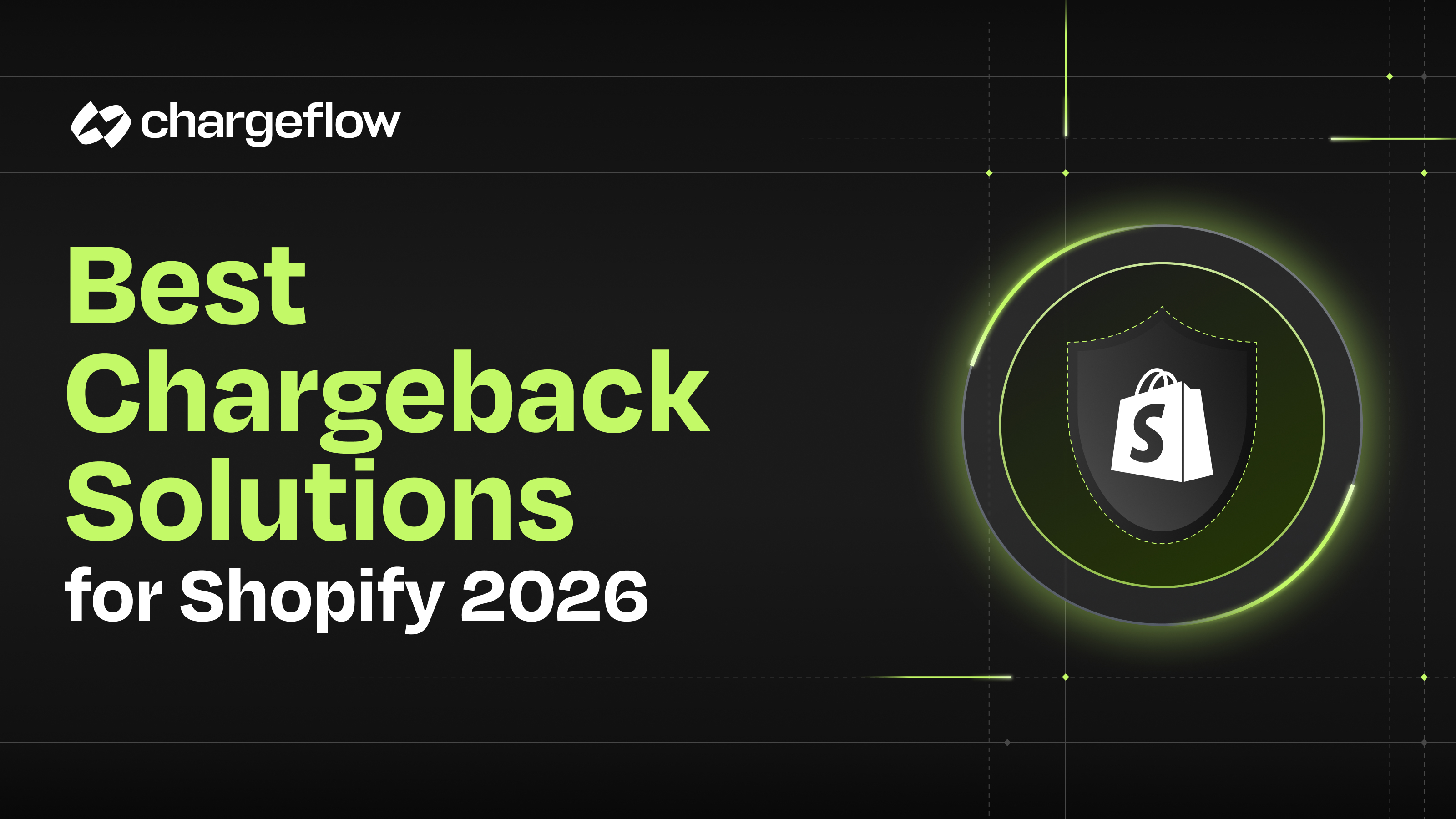Real-World Examples of Friendly Fraud With Bonus Tips

Chargebacks?
No longer your problem.
Recover 4x more chargebacks and prevent up to 90% of incoming ones, powered by AI and a global network of 15,000 merchants.
Learn how to combat friendly fraud with real examples & strategies. Stay ahead in eCommerce with Chargeflow's tailored solutions.
Note: For those of you who missed the previous post, check out 80% of Chargebacks Due to Friendly Fraud: Unveiling What It Is and Its Business Impact before diving into this post.
Those of you who have been hit with friendly fraud, know that it is not just about tackling numbers, it's confronting stories– each chargeback stems from a narrative, a narrative of confusion, oversight, or outright deceit. In our State of Chargebacks Report 2024, we exposed that a whopping 79.03% of chargebacks are not attributed to hackers or stolen credit card details, but rather from transactions where customers hastily press the dispute button or from sheer ill intent. Armed with this knowledge, let’s take a closer look at these encounters between merchant cautiousness and consumer behavior.
I’m going to take you on an exploration where we’ll dive deep into the real stories behind transaction disputes, uncovering what goes on with friendly fraud. With each example, I’ll not unpack the headaches it causes but how you can turn these challenges into chances to strengthen your business.
Armed with insights from the Chargeback Report, we’re not just reacting to friendly fraud – we’re staying one step ahead, getting to the heart of the problem, and tackling it head-on.
Hold onto your seats as a world of accidental disputes and cunning scams is coming up, complete with practical tips to safeguard your revenue and empower you to navigate the ever-changing landscape of eCommerce with confidence.
Real-World Examples of Friendly Fraud
The Accidental Chargeback
Imagine Karen, a frequent online shopper, who recently made several purchases from various new e-stores during a crazy weekend sale. A few weeks later, while reviewing her credit card statement, she came across a charge from “XYZ Corp.” She doesn’t recognize the name, and she can’t remember purchasing anything from a company with that name. Panic mode sets in motion concern about potential fraud, and Karen decides to dispute the charge with her back, hence initiating a chargeback.
In reality, “XYZ Corp” is the parent company of one of the e-stores where she purchased her customized phone case. The store used its legal business name for billing purposes instead of the more recognizable brand name, leading to Karen’s confusion and the subsequent accidental chargeback.
Bonus Tip: To avoid a scenario like Karen’s, ensure your billing descriptors are clear and recognizable. Use a name that your customers will remember from their purchase experience, and consider including a phone number or website in the descriptor for easy identification. This small step can significantly reduce accidental chargebacks, maintaining customer trust and saving your business from unnecessary disputes and fees.
The Misunderstood Subscription
Meet Alex, a tech enthusiast, who loves trying out new apps and services. You’ll never catch him saying no to a free trial period. He’s introduced to a new fitness app that was trending in the App Store, this piqued Alex’s interest. He signed up for a 30-day free trial and provided his card details under the understanding that he would not get charged unless he decided to continue beyond the trial period. However, after a few attempts on the app he got bored and soon forgot about the app not realizing that his trial version converted to a paid subscription.
A couple of months later Alex received monthly recurring charges from the fitness app on his bank statement. He had forgotten all about the subscription or didn’t recognize the charges as legitimate, and therefore contacted his bank to dispute the charges as fraudulent. The bank initiated a chargeback, and the fitness app company was left to deal with the fallout of what assumed was a valid subscription agreement.
Bonus Tip: To prevent situations like Alex’s, businesses should be sure to implement clear communication regarding subscription terms and send reminders before charging for renewals. A simple email or notification a few days or up to a week before the end of the trial can help remind customers of your subscription policies and give them the opportunity to cancel if they no longer wish to continue the service. This proactive approach will greatly reduce the number of accidental chargebacks related to forgotten subscriptions, helping you maintain a positive relationship between business and customer.
The Regretful Shopper
Meet Jordan, an enthusiastic gamer who, during a late-night browning secession, comes across a limited edition gaming console on sale. Swept away in his excitement and the fear that he might lose out on the deal, Jordan makes an impulse purchase. However, upon receiving the console, Jordan immediately regrets the purchase and realizes his reaction was more about the thrill of that movement than the actual need for the product. As his buyer’s remorse sets in, and the window for returning is counting down, Jordan feels stuck with this expensive and unnecessary purchase.
In another swift decision, Jordan disputes the charge with his credit card company, claiming the item was never received. The bank initiated a chargeback, leaving the merchant to account for the lost revenue and the returned product, despite that transaction being legitimate.
Bonus Tip: To avoid situations like Jordan’s, businesses should promote a flexible return policy and prioritize customer service. This way it is clear to customers that they have options if they are not satisfied with the product/service.
The Dishonest Claim
Meet Stephanie, she just received her designer shoes order. Upon receiving them she decides their not exactly what she wanted, but instead of returning them Stephanie claims she never received her package. Unknown to Stephanie at the time, the merchant used a reputable shipping service that provided detailed delivery confirmation, including the photo of the package on her doorstep.
This real-world scenario sheds light on the complexities merchants face with dishonest chargeback claims. When it comes to delivery confirmation photographic evidence or a signature from the recipient is crucial in protecting merchants against such fraudulent claims. Not only do they provide tangible proof of delivery but also strengthen a merchant’s position during the chargeback representment process.
The Family Fraud
Meet Jake, a young child, who unknowingly uses his father’s phone to order a taxi. When the taxi unexpectedly arrives, the parents, unaware of Jake’s action and not recognizing the charge, dispute the transaction with their bank, believing it to be unauthorized. This situation is a classic example of family fraud, where a misunderstanding within the family leads to a chargeback dispute, underscoring the importance of clear communication and secure payment practices within households.
Bonus Tip: For eCommerce platforms, it's key to offer tools that enable account holders to safeguard against unauthorized use, like setting up parental controls for in-app purchases. This proactive approach can greatly reduce accidental chargebacks and enhance customer trust.
Strategies to Combat Friendly Fraud
To combat friendly fraud the following these strategies as suggested in the State of Chargebacks report can help:
- Enhance Your Customer Experience: Improve communication and clarity in transaction details to reduce misunderstandings that may lead to accidental chargebacks.
- Automated Fraud Detection: Employ advanced technologies to analyze pre-transaction data, helping to identify suspicious activities early.
- Chargeback Management Tools: Implement specialized tools to help streamline the handling of both friendly fraud and true fraud, safeguarding against revenue loss.
- Educate Customers: Utilize automated platforms to inform customers about the chargeback process, promoting transparency and understanding.
Wrapping Up: Navigating Friendly Fraud with Chargeflow
As we journeyed through the intricacies of friendly fraud, delving into real-world examples and practical strategies, we've uncovered valuable insights for safeguarding your business. Leveraging the findings from the State of Chargebacks Report 2024, we've illuminated a path forward in the fight against friendly fraud.
Chargeflow stands ready with tailored solutions to support your efforts in effectively countering friendly fraud. For deeper insights and ongoing guidance, explore the full report and stay connected with Chargeflow's blog for expert advice to navigate the ever-evolving eCommerce landscape with confidence. Together, let's proactively safeguard your business against the challenges of friendly fraud.

Chargebacks?
No longer your problem.
Recover 4x more chargebacks and prevent up to 90% of incoming ones, powered by AI and a global network of 15,000 merchants.






























.png)








